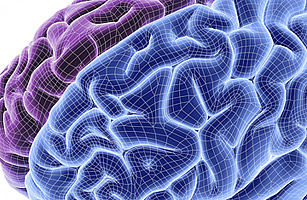
There are few men in the world who haven’t muttered a quiet word of thanks to the anonymous man who invented the name tag, that “Hello, my name is” accessory that can be such a lifesaver at cocktail parties. It’s not certain, of course, that a man invented it, but the odds are good, since so many males — far more than females — would be helpless without it.
It’s long been an accepted truth among married couples that it’s usually the wife who must steer the pair through social gatherings, reminding her husband that he’s meeting someone for the first, second or 15th time — and science backs up that observation. In lab settings, women routinely outperform men in facial-recognition skills, both in terms of speed and reliability. Imaging scans have shown that part of the reason is that men rely only on the right side of the brain in summoning up images of a face they’ve seen before, while women recruit from both hemispheres — literally doubling the brainpower.Now, research from York University in Toronto has added a wrinkle to the existing wisdom. It’s not just women whose brains are so nimble, the investigators have determined; it’s gay men too.
In the Canadian study, psychologist Jennifer Steeves recruited a sample group of homosexual men, heterosexual men and heterosexual women. Significantly, she took care to include both left- and right-handed people among the subjects. All the volunteers were shown pictures of 10 faces and given time to try to memorize them. The photos were black and white, and digitally edited to remove ears, hair and blemishes. This eliminated physical landmarks people often use to remember faces and forced the subjects to rely on major features alone, which was the skill Steeves and her team were trying to test. Finally, those 10 faces were mixed with similarly edited images of 50 other people and flashed on a screen for just milliseconds apiece. The subjects’ job was to press a key when they saw a face they’d seen before.
The results confirmed what the investigators suspected they’d find: the gay men and straight women scored about equally well in the test, and both did better than the straight men. What’s more, within the straight-male group, lefties outperformed righties. The explanation is rooted mostly in the genes.
All people are born with genetic coding that regulates body symmetry and asymmetry. This includes not just handedness but also which way the whorl in the hair at the crown grows and which hemisphere of the brain will be dominant for processing language. Gender and orientation can sometimes get mixed up with this, since a closely linked suite of genes controls them as well: gay men are 39% likelier to be left-handed than straight men, for example, and likelier to have a counterclockwise hair whorl — by a factor of nearly four, according to one study.
“Characteristics like this are determined very, very early on,” says Steeves. “A baby’s handedness can sometimes even be observed in utero.”If sex and symmetry get mixed up this way, there’s no reason the phenomenon should sidestep the brain, and Steeves does not think it does. Gay men, she believes, probably do so well at recognizing faces because, like women, they’re putting both hemispheres to work at once. Greater crosstalk between the two halves via the corpus callosum — the cable of nerve fibers that serves as sort of a superhighway between left and right — probably contributes to this too. That, however, is not something Steeves and her colleagues have been able to demonstrate conclusively yet, since they have not had the chance to rerun their study while simultaneously scanning the brains of their subjects with a functional magnetic resonance imager . “The university just doesn’t have one,” she says. “But we’re getting one soon, and we’ll be able to take that next step then.”
None of this means that it will ever be possible simply to take an fMRI of a brain and tell from that alone if it belongs to a homosexual or heterosexual — and given privacy concerns and the risk of bias, Steeves wouldn’t even want to try. “I would hesitate to do post-hoc analysis,” she says. “There are scary things that could happen with that.” What it does mean, however, is that science’s understanding of the roots of sexuality, so long shrouded in misinformation, is steadily edging into the light — and there’s nothing scary about that.
See TIME’s Pictures of the Week.
See the Cartoons of the Week.